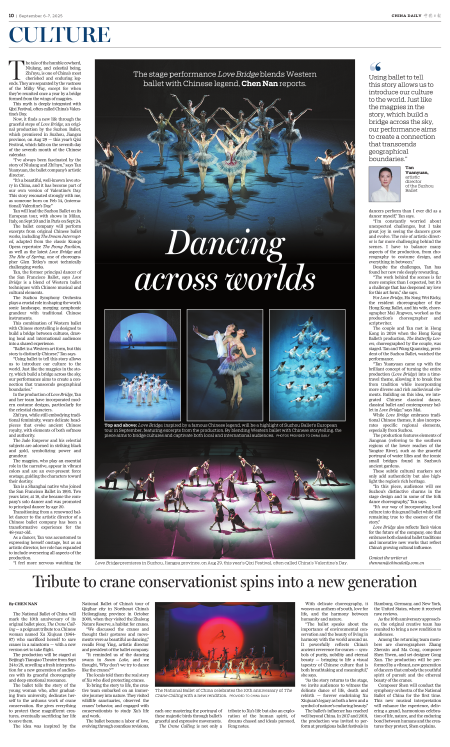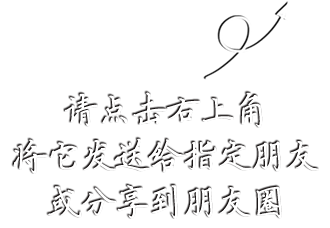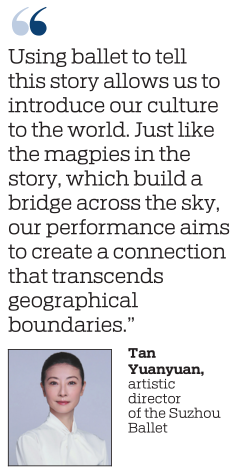
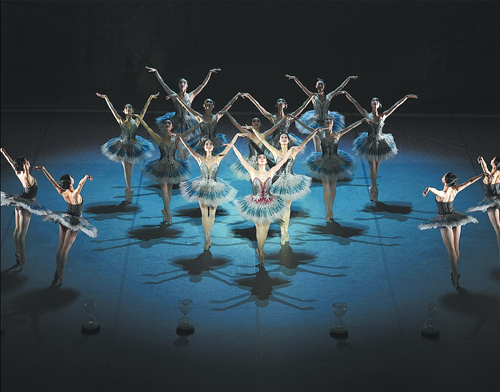
Love Bridge, inspired by a famous Chinese legend, will be a highlight of Suzhou Ballet's European tour in September, featuring excerpts from the production. By blending Western ballet with Chinese storytelling, the piece aims to bridge cultures and captivate both local and international audiences.
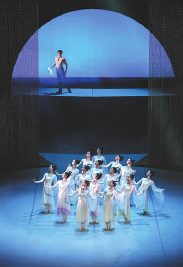
Love Bridge, inspired by a famous Chinese legend, will be a highlight of Suzhou Ballet's European tour in September, featuring excerpts from the production. By blending Western ballet with Chinese storytelling, the piece aims to bridge cultures and captivate both local and international audiences.
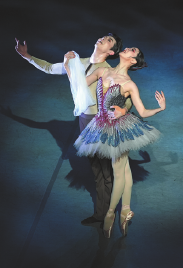
Love Bridge, inspired by a famous Chinese legend, will be a highlight of Suzhou Ballet's European tour in September, featuring excerpts from the production. By blending Western ballet with Chinese storytelling, the piece aims to bridge cultures and captivate both local and international audiences.
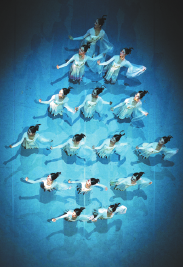
Love Bridge, inspired by a famous Chinese legend, will be a highlight of Suzhou Ballet's European tour in September, featuring excerpts from the production. By blending Western ballet with Chinese storytelling, the piece aims to bridge cultures and captivate both local and international audiences.
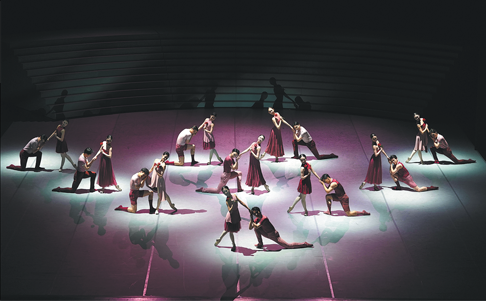
Love Bridge premieres in Suzhou, Jiangsu province, on Aug 29, this year's Qixi Festival, often called China's Valentine's Day.
The tale of the humble cowherd, Niulang, and celestial being, Zhi'nyu, is one of China's most cherished and enduring legends. They are separated by the vastness of the Milky Way, except for when they're reunited once a year by a bridge formed from the wings of magpies.
This myth is deeply integrated with Qixi Festival, often called China's Valentine's Day.
Now, it finds a new life through the graceful steps of Love Bridge, an original production by the Suzhou Ballet, which premiered in Suzhou, Jiangsu province, on Aug 29 — this year's Qixi Festival, which falls on the seventh day of the seventh month of the Chinese calendar.
"I've always been fascinated by the story of Niulang and Zhi'nyu," says Tan Yuanyuan, the ballet company's artistic director.
"It's a beautiful, well-known love story in China, and it has become part of our own version of Valentine's Day. This story resonated strongly with me, as someone born on Feb 14, (international) Valentine's Day."
Tan will lead the Suzhou Ballet on its European tour, with shows in Milan, Italy, on Sept 20 and in Paris on Sept 24.
The ballet company will perform excerpts from original Chinese ballet works, including The Dream Interrupted, adapted from the classic Kunqu Opera repertoire The Peony Pavilion, as well as the latest Love Bridge and The Rite of Spring, one of choreographer Glen Tetley's most technically challenging works.
Tan, the former principal dancer of the San Francisco Ballet, says Love Bridge is a blend of Western ballet techniques with Chinese musical and cultural elements.
The Suzhou Symphony Orchestra plays a crucial role in shaping the work's sonic landscape, merging symphonic grandeur with traditional Chinese instruments.
This combination of Western ballet with Chinese storytelling is designed to build a bridge between cultures, drawing local and international audiences into a shared experience.
"Ballet is a Western art form, but this story is distinctly Chinese," Tan says.
"Using ballet to tell this story allows us to introduce our culture to the world. Just like the magpies in the story, which build a bridge across the sky, our performance aims to create a connection that transcends geographical boundaries."
In the production of Love Bridge, Tan and her team have incorporated modern costume designs, particularly for the celestial characters.
Zhi'nyu, while still embodying traditional femininity, wears delicate headpieces that evoke ancient Chinese royalty, with elements of both softness and authority.
The Jade Emperor and his celestial subjects are adorned in striking black and gold, symbolizing power and grandeur.
The magpies, who play an essential role in the narrative, appear in vibrant colors and are an ever-present force onstage, guiding the characters toward their destiny.
Tan is a Shanghai native who joined the San Francisco Ballet in 1995. Two years later, at 18, she became the company's solo dancer and was promoted to principal dancer by age 20.
Transitioning from a renowned ballet dancer to the artistic director of a Chinese ballet company has been a transformative experience for the 48-year-old.
As a dancer, Tan was accustomed to expressing herself onstage, but as an artistic director, her role has expanded to include overseeing all aspects of the production.
"I feel more nervous watching the dancers perform than I ever did as a dancer myself," Tan says.
"I'm constantly worried about unexpected challenges, but I take great joy in seeing the dancers grow and evolve. The role of artistic director is far more challenging behind the scenes. I have to balance many aspects of the production, from choreography to costume design, and everything in between."
Despite the challenges, Tan has found her new role deeply rewarding.
"The work behind the scenes is far more complex than I expected, but it's a challenge that has deepened my love for this art form," she says.
For Love Bridge, Hu Song Wei Ricky, the resident choreographer of the Hong Kong Ballet, and his wife, choreographer Mai Jingwen, worked as the production's choreographer and scriptwriter.
The couple and Tan met in Hong Kong in 2024 when the Hong Kong Ballet's production, The Butterfly Lovers, choreographed by the couple, was staged. Tan and Wang Quanxing, president of the Suzhou Ballet, watched the performance.
"Tan Yuanyuan came up with the brilliant concept of turning the entire production (Love Bridge) into a time-travel theme, allowing it to break free from tradition while incorporating more diverse and rich audiovisual elements. Building on this idea, we integrated Chinese classical dance, classical ballet and contemporary ballet in Love Bridge," says Mai.
While Love Bridge embraces traditional Chinese themes, it also incorporates specific regional elements, especially from Suzhou.
The production features elements of Jiangnan (referring to the southern regions of the lower reaches of the Yangtze River), such as the graceful portrayal of water lilies and the iconic small bridges found in Suzhou's ancient gardens.
These subtle cultural markers not only add authenticity but also highlight the region's rich heritage.
"In this piece, audiences will see Suzhou's distinctive charms in the stage design and in some of the folk dance choreography," Tan says.
"It's our way of incorporating local culture into this grand ballet while still remaining true to the essence of the story."
Love Bridge also reflects Tan's vision for the future of the company, one that embraces both classical ballet traditions and innovative new works that reflect China's growing cultural influence.
Contact the writer at chennan@chinadaily.com.cn
